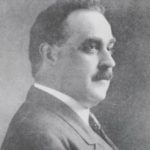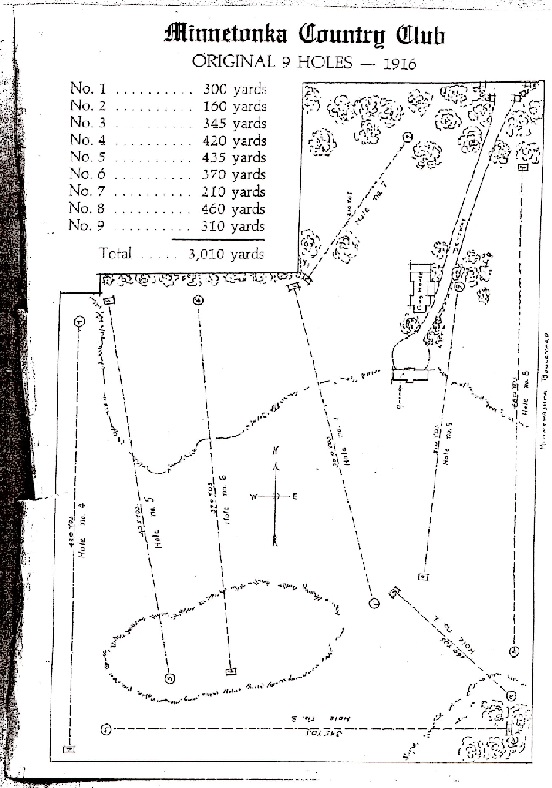The early evolution of Minnesota golf, starting in the mid-1890s and continuing through the next four decades, is owed to more than a half-dozen groups: players, investors, instructors, city planners, club professionals, greenskeepers and even curiosity seekers.
And one more, as important as any other: golf course architects.
Minnesota was fortunate to have had skilled architects walk its land in those days, some as residents of the state (albeit transplants) and some as for-hire creators within state borders. By my estimation, nine such men were especially influential. More or less in chronological order: Robert Foulis, William Watson, William Clark, Tom Vardon, Donald Ross, Ben Knight, Seth Raynor and A.W. Tillinghast.
Wait, that’s only eight. The ninth?
Tom Bendelow. One of nine, yet one of a kind.
Bendelow’s body of work can be reasonably summarized in two words: One, copious, and two, underappreciated.
Bendelow was credited with laying out close to 700 golf courses, according to a flier forwarded to me by Bendelow historian Stuart Bendelow, who is Tom Bendelow’s  grandson. That makes him the most prolific golf architect of all time worldwide, probably by a significant margin.
grandson. That makes him the most prolific golf architect of all time worldwide, probably by a significant margin.
Stuart Bendelow’s research resulted in his appropriately titled book “Thomas ‘Tom’ Bendelow, The Johnny Appleseed of American Golf,” published in 2006. It is a thorough, well-written biography that describes not only the architect but the golf environment of the late 1800s and early 1900s in which he worked.
In prior decades, some of Bendelow’s designs were brushed off as “eighteen stakes on a Sunday afternoon.” (Never mind, wrote Geoff Cornish and Ron Whitten in “Architects of Golf,” that Bendelow was deeply religious and never worked or played golf on Sundays, never drank alcohol, never swore and never told off-color jokes.) That criticism is heard less these days, both with the writing of Stuart Bendelow’s book and with the recognition that designing 700 golf courses, whether they be enduring classics or “sporty” nine-holers – that was said to be Tom Bendelow’s favorite one-word course description – was no walk after walk after walk in the park.
Much of Bendelow’s work came with him employed by the A.G. Spalding Co. of Chicago. “When Bendelow joined A.G. Spalding & Bros.” Stuart Bendelow wrote, “his (and A.G.’s) objective was to promote the game of golf … by increasing the number of golf courses. They were not seeking to design and build championship courses or courses to test the honed skills of the best players, but rather courses that new players could enjoy, courses that would improve player proficiency, courses that would promote player participation, and courses that could be maintained at a reasonable expense. Ideally, he felt that municipal or public golf courses should be like public ball fields, open to all players at little or no cost. …
“It would be fair,” Stuart Bendelow continued later, “to call Bendelow’s approach to course design a ‘naturalist’s approach,’ in that he strove to utilize the natural features of the course to maximum advantage.”
 Tom Bendelow’s most noted work was Medinah No. 3 in suburban Chicago (1928). He designed 118 courses in Illinois, according to a list assembled by Stuart Bendelow, and branched out in all directions, including north to Wisconsin for 39 and northwest to Minnesota for somewhere between eight and 12.
Tom Bendelow’s most noted work was Medinah No. 3 in suburban Chicago (1928). He designed 118 courses in Illinois, according to a list assembled by Stuart Bendelow, and branched out in all directions, including north to Wisconsin for 39 and northwest to Minnesota for somewhere between eight and 12.
The Bendelow-designed Minnesota courses on Stuart Bendelow’s list raise questions about some details, including course names and contributions to particular projects, i.e. was he a sole designer? Collaborator? Redesigner? Overseer of an expansion? Contributor? That isn’t intended as a diminishing of Stuart Bendelow’s book, which includes many such notations and meticulously documented sources. The issue, rather, is that assembling source material on century-old golf courses can be incomplete, inaccurate or hopelessly labyrinthine. (That’s speaking from experience.)
In any event, these are the Minnesota golf courses cited by Stuart Bendelow as Tom Bendelow designs: Northland Country Club, Duluth, 1912; Edina CC, 1915; Lafayette Club, 1915; Minneapolis Golf Club, 1916; Minnetonka Country Club, 1916; Golden Valley CC, 1916; Detroit Country Club, Detroit Lakes, 1917; CC of Minneapolis, 1919; Mankato Golf Club, 1921.
Just to add or elaborate, based on other accounts:
— Tom Bendelow likely advised on Northland’s expansion to 18 holes.
— The Minneapolis GC and Golden Valley CC references likely refer to the same course. The grounds in Golden Valley were originally named Minneapolis Golf Club; most of that club’s membership moved to St. Louis Park in 1916, and Bendelow then laid out a nine-holer (1916) and then 18-holer (1918) in Golden Valley, later overhauled by A.W. Tillinghast.
— I’m uncertain about the reference to CC of Minneapolis, which Stuart Bendelow attributes to “Golf Courses by the American Park Builders” in 1926. It might have been to Minikahda, where earlier Tom Bendelow oversaw improvements to an expansion of that course to 18 holes, according to Minnesota golf historian Rick Shefchik’s book “From Fields to Fairways.”
— Bendelow also designed or contributed to the design of Winona Country Club (now called Bridges, established in 1920), Alexandria Country Club and Interlaken in Fairmont. Some accounts credit Winona CC solely to Knight, but I suspect Bendelow was at least as vital to the original design as Knight, the first professional at Winona CC. (Watson also is credited in some accounts.)
Bendelow’s most prominent design in Minnesota was Minnetonka Country Club, a course I covered at some length in my book “More! Gone. Minnesota’s Lost Golf Courses, Part 2,” released in July. Though I can’t say I ever played the course, which closed permanently in 2014, I gather from a handful who have played it that its design and features largely reflected what was written earlier here about Bendelow.

“The cultivation and expansion of the rudimentary layouts he planned was up to the club he was visiting,” the late Bob Labbance, a member of the U.S. Golf Association museum and library committee, once wrote. “If they installed hazards, developed greens and expended the length of the course as playing talent improved, his work would live on for decades. If not, at least they had a foundation to appreciate the game.”
I had a pleasant conversation with Stuart Bendelow early this year regarding his grandfather’s work at Minnetonka and other Minnesota sites. A couple of months ago, he forwarded documents with more information on his famed grandfather. Among the highlights:
— Tom Bendelow, born in Aberdeen, Scotland, in 1868, grew up playing the Aberdeen Kings Links and was a typesetter before moving to America in 1892.
— He redesigned Van Cortlandt Park in the Bronx and was its first superintendent.
— He opened America’s first indoor golf school in New York City in 1895-96.
— He “laid out 150 golf courses in the past eighteen months,” the Fort Wayne (Ind.) News reported. By 1915, that number had increased to 500.
— He lectured on golf course design and construction at the University of Illinois, prompting the university to include golf course design into its landscape architecture curriculum, the first in the United States.
Bendelow’s other design credits and accomplishments as a U.S. golf pioneer are ample. Wrote Stuart Bendelow: “Tom Bendelow’s efforts were preeminent in the founding and growth of golf as a popular sport among the greater population in America.”
Latest posts by Joe Bissen (see all)
- Another lost routing: Hilltop, Columbia Heights - June 19, 2024
- Two lost routes: First, Antlers Park - June 17, 2024
- Tree trouble and townball: Naeseth Country Club, Wanamingo - May 6, 2024